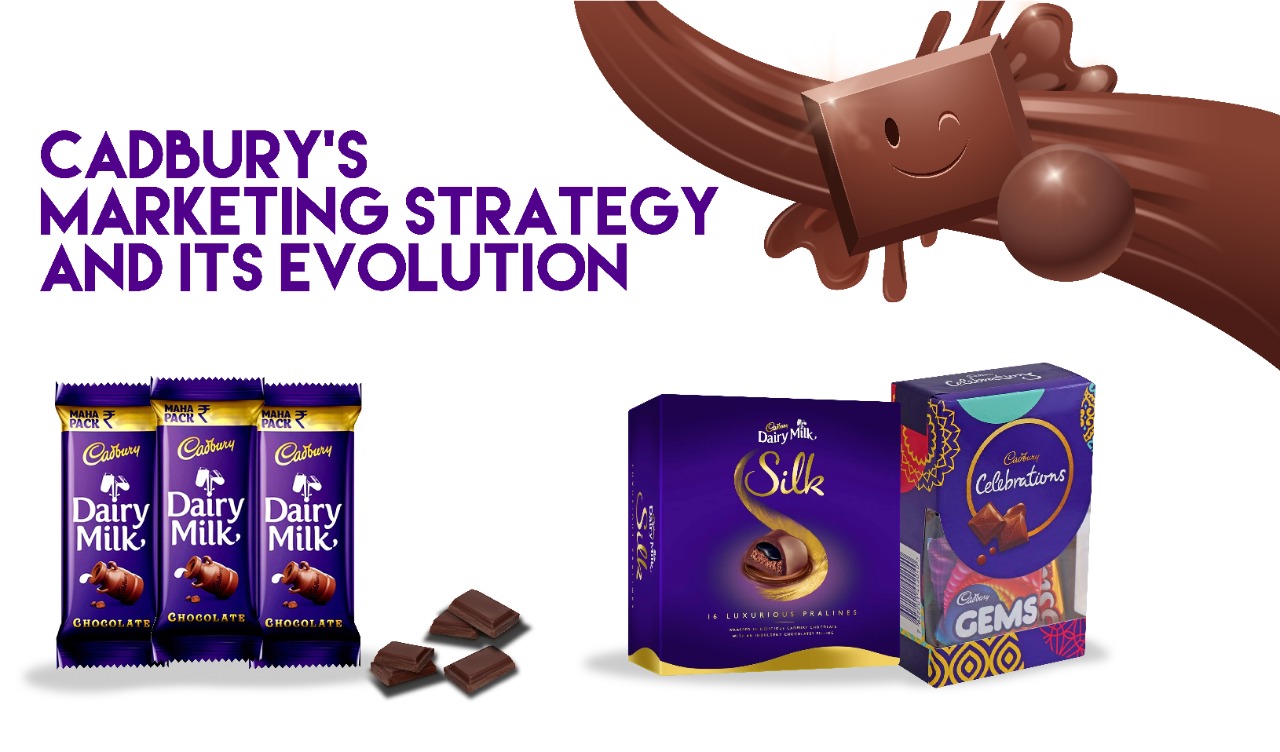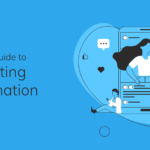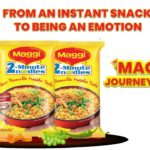As a global community, we are all well aware of the importance of decadent sweets in our
celebrations or daily routine. Irrespective of the religion, culture, gender or nationality we belong to,
the one thing that brings us together is food. And desserts top the list when it comes to our idea of
sharing love. That being said, how often do you happen to think of digging into some chocolate and
the first thing to cross your mind is Cadbury’s?
Such is the influence of the brand on the consumers that most of them don’t even ask for a
chocolate when shopping, rather a Cadbury! Before digging deeper into how Cadbury became the
most accessible, and easily available, go-to dessert of our day-to-day lives, let take a look at how the
brand has evolved since its inception during the times of no digital channels.
Beginning of a brand legacy
Established by John Cadbury in the early 1800s in Birmingham, England, Cadbury’s journey in India
started in 1948 with Mumbai as it headquarters. Importing chocolates seemed like a new yet thriving
business then. With the rising demand and popularity amongst those who could afford luxury
chocolates in India back then, manufacturing operations soon started at multiple locations including
in India.
With the growing demand and love for chocolates in the coming decades, the first-of-its-kind
chocolate brand in India brought more and better variants for the chocolate apart from venturing
into beverages like Bournvita, for its consumers, only to fuel their love for chocolate.
From then to this day, Cadbury India has a share of over 70% in the market, making it a market leader
in the industry globally. But how did it establish its identity in the Indian market where sweets made
of milk, gram flour, sugar, or leftover churned cream, had been ruling for decades.
Understanding the culture, demography and purchasing power of the citizens and then devising
campaigns to grabbing the interest of the audience in India may have started with a hiccup, but
Cadbury for sure knew the way to the Indian hearts. Speaking of which, the channels of
communication to reach its consumers may have evolved over the time, but what hasn’t, are the
emotions. And the chocolate giant seems to have been consistent in its approach to portray the
emotions onscreen with one gimmick after the other, even in times of crisis management.
Taking a close look at how has, Cadbury retained its brand value consistently, decades after it was
introduced in the land of desi sweets.
- Identify the right audience
In the initial years of its arrival in India, chocolate was considered a luxury which was affordable
only to upper middle class and above. To expand its customer base and turning it into an
opportunity in the next few years, Cadbury launched a mini version of the chocolate, with the
price and contentment considerations that came along for buying a chocolate to the middle
class. The centre-filled chocolate taste of Eclairs had the widest reach possible through TV and
newspaper commercials when it entered the choice list of every 80s and 90s kid for their
birthday celebration in school, or as a token of good work from parents. Till this day, Cadbury
Eclairs, renamed Choclairs in 2013, has a strong hold in the semi-urban and rural market. - Increase the target market – Chocolate for ALL
Once popular with the kids, Eclairs and Dairy Milk had established itself as a symbol for inherent
goodness and friendship between kids. While the sales and revenue from these two had beenconstantly rising, the brand was perceived as a kids-ONLY. In 1994, Cadbury released a TV
Commercial with tagline ‘Kuch Khasa Hai…. Asli Swaad Zindagi Ka’ to break the brand’s kids-only
image and positioned it as a product for everyone’s consumption, irrespective of the age or
gender. What else could be a better combination than the girls and Cricket and it gave birth to an
advertisement, where a young female dancing on the cricket field while enjoying the taste of
chocolate.
Now, that’s an act every Indian desire to do that when Yuvraj Singh hits the last six to win the
World Cup in 2011. Isn’t it?
To think of it in the digital age, the video would have gone viral with memes reigning the social
media for the next couple of weeks. - Encashing Festive – “Gift” Promotional Campaigns
Once Dairy Milk had penetrated the Indian dessert industry, it began to leverage forward looking
attitudes and culture which were aspirational. From a girl running on a racetrack, to older people
eating chocolates and singing in the street, Cadbury ensured it touched every feeling in the society,
which also included a very essential aspect- gifting and festivals. Valentine’s day, for example, had
hardly seen any excitement among the youth of India. As a handy, go-to, happiness-inducing
element, dairy milk chocolate was used for the first time as a gift to someone special.
Aware of how, we as a nation, consider our festivals and celebrations incomplete without sweet,
Cadbury Celebrations was launched in the late 2000s that not only became the alternative to local
sweets but also increased the volume sales.. Be it representing a sweet-n-rocky brother-sister bond,
or a family function, the array of innovation around Cadbury Celebrations catered to every aspect of
gifting making it a symbol of happiness. The almond, cashews, and raisins enrobed in rich chocolate,
wrapped in a blingy purple box made Celebrations a convenient, go-to gifting choice for Indians who
consider dry fruits an auspicious element in food.
The portrayal of siblings fighting over chocolate in a Raksha Bandhan ad, or a parent celebrating with
something sweet on the daughter’s major achievement was relatable to the audience. Till date, these
ads continue to effectively drive sales through various digital platforms like YouTube through paid
campaigns and customer engagement through Influencer marketing.
Bottomline…. What picked up Cadburys sales…. Viral Advertisements on the Television media…
Most watched. - Crisis Management
In the 2000s, Cadbury saw a major backlash when few packets of Dairy Milk were found to be
ingested with worms. At that point, Cadbury was struck with the worst crisis ever with Dairy Milk
experiencing rejection from everywhere. It wouldn’t be incorrect to say that Cadbury began with
‘Influencer marketing’ much before digital channels overpowered the generation, when it roped in a
veteran Bollywood star with a huge fan following among parents in all parts of India.
Cadbury’s took the route of influencer Marketing and that’s how Amitabh Bachchan, as the first
celebrity was brought onboard as the brand ambassador to promote Dairy milk under the ‘Kuch
Meetha Ho jaaye’ series of ads. The move was necessary after the worm controversy that had a
huge negative impact on the sales and revenue in the following months. To go more aggressive with
positive branding, Cadbury increased its ad budget by 40%.
The same year to gain the customers trust back, Cadbury launched the Miss Palampur ad campaign
while they activated Project Vishwas. The commercial talked about a cow’s victory on winning the
title and her so-called father (played by AB) who proudly described how tough the competition was.
The campaign was set in villages to win the trust of rural India without losing its urban appeal.
Cadbury left no stone unturned to tell the story. They tapped every channel to ensure its reach was
as wide as possible– TV, print media, radio and hoardings, bus shelters, retail points, and of course
digital. Between 2005-09 the brand increased its sales to double, from 22% to 44%.
Coming to think of it as a 360° marketing firm, traditional marketing worked wonders when digital
transformation was a thing talked of as in the future. However, wouldn’t the brand tap every digital
channel in this age, from YouTube ads to paid campaigns on FB, trending hashtags on Twitter, or
video contests on IG reels and Influencer marketing- to communicate how they would be honored if
the audience gave them another chance? - Traditional and digital channels
The digital transformation era may have made it easier for brands to reach out and engage with their
consumers directly, but the emotions remain unchanged for decades. And that is what worked the
most for Cadbury.
A year back when we were hit with a pandemic, and numerous versions of lockdown had impacted
the economy, people from different strata of the society had a tough time juggling between their
lifestyles and health safety. 2020 turned out to be a year when the world needed a high dose of
generosity. This led to the brand launching a limited-edition CDM ‘Thank-you’ bars. To add to the
generosity here, the choc-giant committed a part of the sale from these bars towards the health
insurance policies of the daily wage earners. #SayThankYou was seen trending on social media
channels during the lockdown. A report from Business Insider said that the company sold around 15
million bars and sponsored health insurance for about 15,000 domestic workers after the
campaign.
Going by the conventional way, we believe the brand would have launched an ad to portray the
challenges of frontline workers during the pandemic and made the audience aware of how their
families have been supportive and are managing in their absence.
Conclusion:
Typically, it is believed that consuming something sweet is comforting and is a mood lifter. And this is
something Cadbury’s marketing has always portrayed. Cadbury has never failed to reflect the
emotions of its audience thereby convincing them that it can be consumed by anyone, anywhere.
The campaigns have been effective through ages and different media and have a consistent message
for ALL age groups- someone who is with you through the ups and downs of life, helping you bounce
back.
Managing and controlling the brand was a priority then and is a priority now. The medium has
changed, and channels of communication evolved. But what remains unaltered is the brand’s
capability to grab and project the emotions to build brand, increase sales and manage reputation
even under crisis situation. Thats the power of Marketing.



